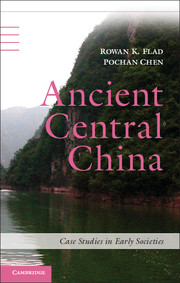Part II - Political and Cultural Topographies
Published online by Cambridge University Press: 05 February 2013
Summary
Political and Cultural Topographies
Chapter 3 explains the emphasis on culture-historical traditions as a principal factor shaping the topography of research in Central China. In the next several chapters (Chapters 4–6), we turn our attention to the substance of this culture-history to outline the centers and peripheries of political and cultural developments in the region. Our focus is the period from the middle third to late first millennia b.c. During this era, the Sichuan Basin and the Middle Yangzi separately (but not independently) saw the emergence of politically complex societies, while the Three Gorges remained a politically peripheral region. Although the timing, tempo, and scale of emerging complexity differed in the two regions, in both cases, the critical roles that polities played in local cultural developments are reflected in historical references and archaeological data. To evaluate the correspondence among cultural, political, and other topographies, we must first outline the basic geography of culture history.
The political and cultural topographies of Central China changed over time. Any single synthesis, however, necessarily must reduce a constantly changing situation to a dominant narrative. Here our narrative aims to identify centers of authority and control as well as features and sites that played important roles in political integration. These centers of influence are noted in historical documents as the political entities Shu and Chu, associated with the Sichuan Basin and the Middle Yangzi region, respectively.
- Type
- Chapter
- Information
- Ancient Central ChinaCenters and Peripheries along the Yangzi River, pp. 67 - 70Publisher: Cambridge University PressPrint publication year: 2013



